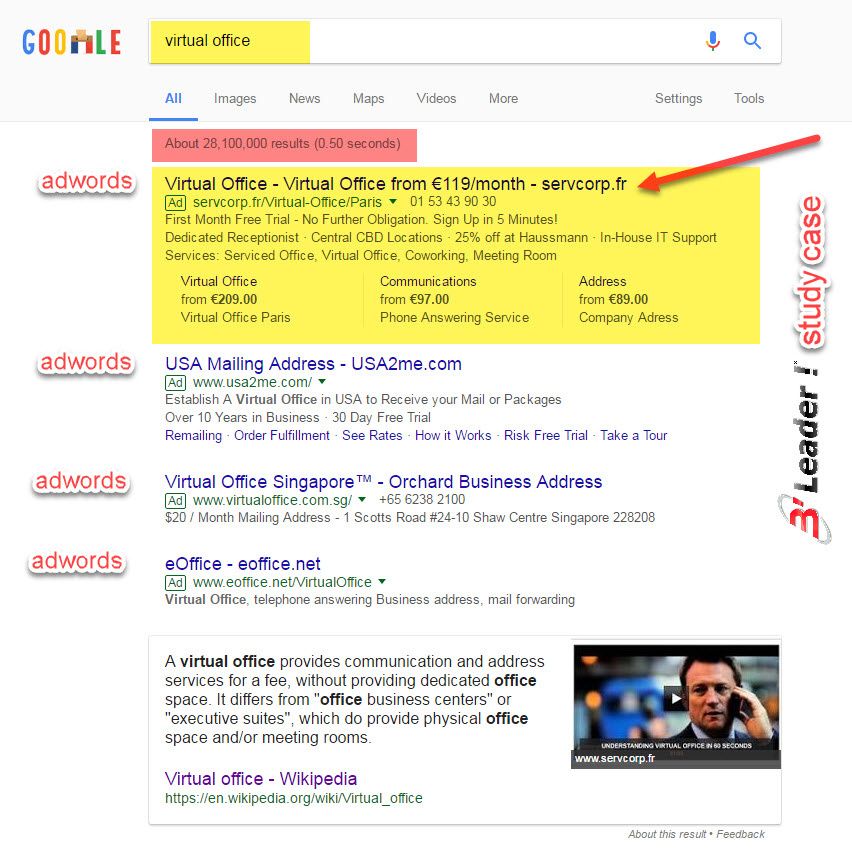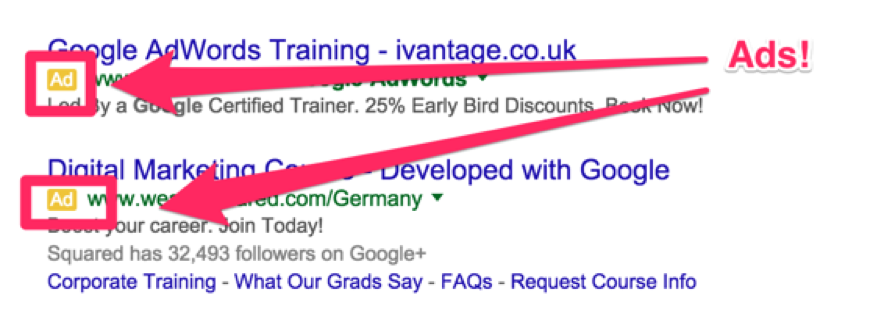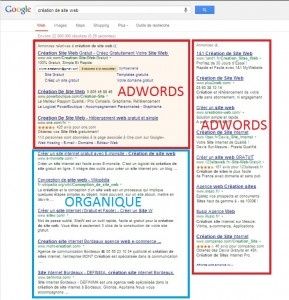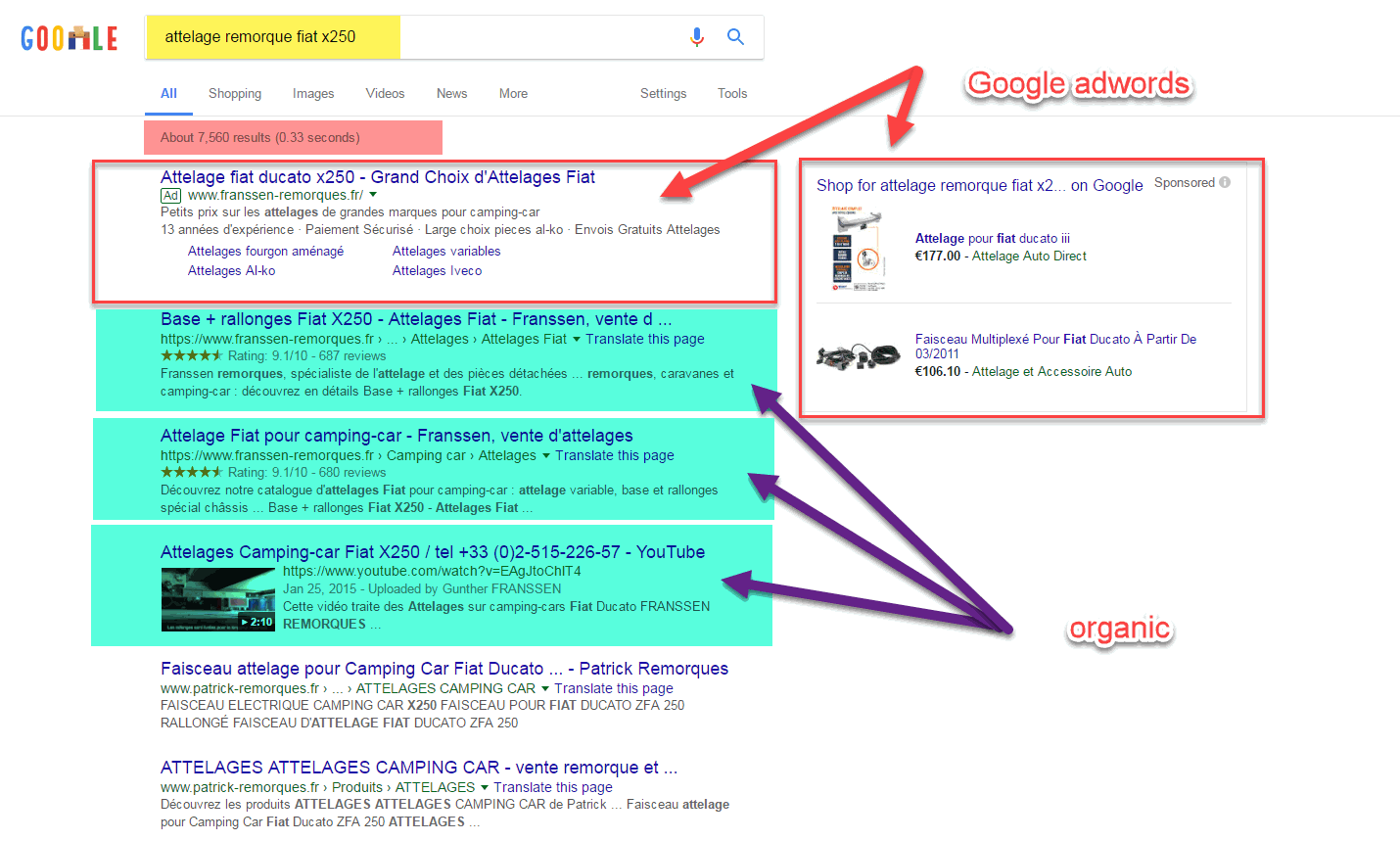(SERVCORP) VIRTUAL OFFICE concept : what may it mean once the 3rd industrial revolution is ON ?
Publié le 23 Avril 2017
For those who want to win!
SERVCORP company is a leading worldwide company in VIRTUAL OFFICE market segment.
Servcorp provides a wide variety of office space solutions for businesses. Find out about our virtual offices, executive suites, meeting rooms and more!

This study case attempts to show how important it is in a leading process to consider both intellectual / industrial properties and physical / digital visibilities.
B'Leader, a global web leading service provider, attempts to demonstrate here through a few facts, how important it is to own a global vision.

First, we are coming back to official 'industrial revolution' definition :
The virtual office idea came from a combination of technological innovation and the Information Age.
The concept has roots in life before (and even during) the Industrial Revolution, where parallels to current work styles, specifically working from home, have been drawn.[2]
The virtual office concept is an evolution of the executive suite industry. However, the inflexibility of an executive suite lease doesn't work for many business models and helped spur the virtual office concept.[3]
read more : https://en.wikipedia.org/wiki/The_Third_Industrial_Revolution

Primelerely to expand, SERVCORP has bet on a trademark : 'virtual office' associated to his own company name SERVCORP. It has been somehow difficult upon the countries. But, it intended to become a serious rampart against competitors.
Let's study 10 years later, as web consideration has dramatically grown up, where we are.
As the SERVCORP VIRTUAL OFFICE is a registred trademark, this expression and the several ways to use might belong exclusively to the company SERVCORP. Does'nt it ?
In fact it's not the case.
This following link attempts to show how strong is the SERVCORP VIRTUAL OFFICE on a jurist point of view. Please observe the country deposit list (japan, europe, singapore, usa, australia, ...). SERVCORP has booked any usefull country. However, this is an attitude inherited from the physical world. What about digital economy or immaterial economy.
When looking to the Web, and no more on a single jurist point of view, what do we observe ?
Let's now use Google engine on a french WINDOWS operating system. When keying "virtual office" we get such result : 28 Millions of results.

Currently, they are 4 Adwords (called Google Adwords - what is it ?). The first belongs to SERVCORP company; the 3 others to several SERVCORP competitors.

Do we observe obvious weaknesses ?
YES without any doubt.
Why ? Amount of money put on the table by SERVCORP may decrease once upon a time, then in that case the second, the the third and the fourth competitors would lead ahead of SERVCORP, whatever SERVCORP is owning or not of a trademark. This is the way it works with google adwords rules. 'VIRTUAL OFFICE' expression even it looks to belong to SERVCORP as a trademark (SERVCORP VIRTUAL OFFICE) in order to protect the mark, does not protect SERVCORP company against competitors on the Web.
Additionally, SERVCORP would end definetely to subscribe to Google Adwords , then SERVCORP would forever disappear from the famous 'U' allowed by Google Adwords procedure : no more visibility on the Web.

This graph explains the root of the 'U'. It begins on TOP, then on the right of the screen.
Then it migrates to bottom :

As SEO affirm, there are 2 zones : the 'U' and the rest. The rest concerns organic SEO

The organic zone is free : in fact nothing is free, it's just a way to say it's less expensive that the adwords way; the way to get a slot on 1st web engine page is to spend time and/or money to make visible your contents. B'Leader does that very well. The adwords zone is not free : you have to pay (if you have no more credits you disappear; if you have less credits than your competitors you disappear).
Let's know observe the next request on Google engine :

'virtual office london' expression returns on 1st google page several adwords URLs. However, SERVCORP nor 'SERVCORP VIRTUAL OFFICE' does not help at all to get position on 1st google page. The SERVCORP financial effort does not be usefull on the Web economy to keep primary position. With the 'virtual office london' expression, there are no SERVCORP URLs within google adwords results. Looking at the rest of the 1st google page, SERVCORP efforts do not bring more results. SERVCORP URLs are not currently on 1st google page with that expression, whatever adwords strategy or organic strategy are used.
What is the current web visitor's behavior ?
![]()
With the 'U' form in mind, we observe a few years ago, web visitors used to click immediately on top left corner or the screen (red color) : the google adwords area. In 2014 (3 years ago) consumers used to click mainly inside the organic zone.
This may demonstrate, customer experience has gathered to avoid clicking in adwords zones. Additionnaly, It demonstrates people in general learned there are other possibility to get true information somewhere else that on top left corner of the screen.
When do the google adwords appear on a google page ?
As soon as someone put some money to adwords system requesting a specific expression : eg: 'attelage remorque fiat x250'
In that case, the google adwords service provider has fullfilled his contract by pushing forward the customer FRANSSEN to the top corner the google page.
But is there any sense to apply such strategy as, the next 3 URLs in the organic field (the TOP 3 positions) are held by FRANSSEN too !?

If the top left location is not obtained (whatever cost considerations), it might be mandatory to host the organic area as much as possible.
This is in that case, what B'Leader method brings to his customer.

Currently, the 5 top organic positions are held by B'leader and his customer FRANSSEN.
Some google images have been highlighted by google engine, as 5 images are displayed after the sixth position.
75% of google images are promoted by B'Leader.
A lit bit earlier, one month ago, we had the following result :

CONCLUSION :
1- It is unnecessary to buy any with Google Adwords keywords if there are no simultaneously efforts made to be inside the organic area.
2- It makes no sense to buy Google Adwords keywords if 1st position is got inside the organic area. It makes worse no sense to buy Google Adwords keywords if several positions are held inside the organic zone on 1st google page.
3- Any trademark politic or strategy does not be enough if web referencement results are not considered as well as jurist investments.
4- A global approach must be considered when you decide to try to protect your business globally (physical world and digital world)
Learn more :
About The 3rd industrial revolution :
The digitization of manufacturing is the breaking wave of technological change that is ending industrial production as we know it. Two words to remember: Additive manufacturing.
A new industrial era, which The Economist describes as the Third Industrial Revolution, is under way. Enormous change is in the offing. At the moment, digitization is creating a new mindset among industrial planners.
Manufacture car parts with 3D printing
On their computers, a designer and engineer team up to create a three-dimensional object. One of them clicks print, and in the next room – or maybe a room in another country – a 3D printer whirs. Layer by layer, the object comes into existence. Instead of ink, the printer uses plastic- or nylon-based materials. Some companies and entrepreneurs are already producing ready-to-wear shoes, special auto parts and personalized iPhone covers.
The First Industrial Revolution supplanted cottage industries. At the end of the 18th century, the mechanized loom created new wealth but shocked the rural economic sector dependent on handicraft textiles. The Second Revolution, signaled by the US conversion to assembly line production at beginning of the 20th century, made mass production the norm for industrial manufacturing.
3D printing, or Additive manufacturing
Additive manufacturing, the proper description of 3D printing, is spearheading the current revolution, argues The Economist. The article’s author illustrates his thesis by designing a hammer, which is then produced with a “natty wood-effect handle and a metallized head”. If that hammer had been made conventionally, he points out, it would have been more expensive. The producer would have had to make a mold, cast the head, machine it and fit it with a wooden handle. That is a lot of work for one single object. If you produce thousands, you achieve economies of scale. That is how mass production works. The advent of 3D printing means that economies of scale matter much less.
The next generation of robots
Widespread and smarter automation is another catalyst for change. The next generation of robots will be cheaper and easier to use. They will be able to work with people rather than replace them. Currently robots are isolated from people for security reasons; their unthinking motions are a safety hazard. Future robots will be tuned to serve human workers: fetch and carry parts, hold and sort items, clean up and so on.
One consequence of the Third Industrial Revolution is that the number of blue-collar workers will continue to decline while productivity increases. More work will be done in front of computer screens. Labour costs as a proportion of the total cost of production will diminish, which will encourage companies in the Western world to repatriate factories from low-wage countries to realize reduced transport costs. The revolution under way will also allow firms to quickly adjust to changes in local tastes.
“One consequence of the Third Industrial Revolution is that the number of blue-collar workers will continue to decline while productivity increases.”
Improve skills in virtual environments
Digitization also has an impact on training. Students can try to improve their evolving skills in virtual environments while having access to all relevant information at the push of a button. The rise of digitization paves the way for complex simulations. Products designed and tested on computers will enjoy reduced development costs. Inexpensive prototypes produced by additive manufacturing will encourage creative and daring solutions.
The breadth and diversity of products that can be made economically in smaller batches, more flexibly and with less labour will increase as additive manufacturing incorporates new materials such as carbon fibre and nanotechnology into products. The Economist notes that we are turning away from mass production towards more individualized production.
A mix of big and small
Experts predict that traditional manufacturing and mass production, in a hybrid mix with new technologies, will continue for many years, especially in big companies that produce large volumes. Many small and medium-sized firms will jump on new possibilities as the cost of producing complicated articles in small numbers decreases.
Although the revolution has begun, it is unclear exactly where we now stand. Quantum leaps are conceivable as bio- and nanotechnology mature. The Third Revolution may include batteries made from viruses and superstructures from paper-thin sheets of metal.
“There will be countless entrepreneurs in little workshops, homes and, no doubt, garages who will be able to do things they could never have done before,” writes The Economist.
La 3ème REVOLUTION INDUSTRIELLE
L’expression Troisième Révolution industrielle (TRI), popularisée par Jeremy Rifkin, désigne une nouvelle révolution industrielle et économique qui se distinguerait des secteurs d'activité classiques de la production et aurait démarré à la fin du xxe siècle avec le développement des nouvelles technologies de l'information et de la communication (NTIC). Selon certains, comme l'historien des révolutions industrielles François Caron, elle rend compte d'un fait historique en cours2, selon d'autres, comme le prospectiviste Jeremy Rifkin, elle désigne une vision et un projet à réaliser.
source : https://fr.wikipedia.org/wiki/Troisi%C3%A8me_r%C3%A9volution_industrielle
One consequence of the Third Industrial Revolution is that the number of blue-collar workers will continue to decline while productivity increases
/image%2F0846185%2F20170420%2Fob_4444a2_mark-zuckerberg-f8-2017.jpg)
A l'occasion de la conférence annuelle F8, qui se déroule actuellement à San José, en Californie, Mark Zuckerberg, le patron de Facebook, a annoncé plusieurs nouveautés développées par le r...
Mark Zuckerberg Keynote Facebook F8 San José April 2017 : le social VR, Places Graph, ... - OOKAWA Corp.
/image%2F0846185%2F20140921%2Fob_1ecc1d_economie-immateriel.JPG)
Affirmatif ! Le plus étonnant aujourd'hui, en moins de trois semaines après le lancement du nouveau site amireseau.fr sur la toile, je suis agréablement surprise de voir déjà sur GOOGLE la gra...
Peut-on être connu dans l'Espace de vie REEL et devenir B'Leader dans l'espace de vie DIGITAL ? - OOKAWA Corp.
/image%2F0846185%2F20170509%2Fob_baac3a_chauffeur-prive-prive-palace-service.jpg)
Transport Haut de Gamme pour clients fortunés : Toujours plus de discrétion Au mois d'août 2016 à Paris, le chiffre d'affaires des hôtels a diminué de 28 % sur le marché du milieu de gamme e...
Concierge privé - Chauffeur privé - Transport haut de gamme personnes - Transport réservation prestige : des mondes méconnus - OOKAWA Corp.
/image%2F0846185%2F20140705%2Fob_7eb1a2_olivier-mathiot-france-digitale-642x33.jpg)
Lire plus : http://m.business.lesechos.fr/redirect_article.php?id=100475&fw=1 Source : http://humainaucoeurdunumerique.blogspot.fr/2014/06/ce-qu-disent-du-numerique.html?m=1 On ne cessera de le ...
On ne cessera de le rappeler, le numérique est l'équivalent d'une révolution industrielle... - OOKAWA Corp. http://oo
/image%2F0846185%2F20161229%2Fob_b98be7_le-grand-maillage-digital-les-predicti.jpg)
Le grand maillage digital : Les 10 prédictions stratégiques de Gartner pour 2017 - OOKAWA Corp.
Pour 2017, Gartner nous annonce l'avénement du Digital Mesh, ce grand maillage digital effaçant les frontières des modes physiques et digitaux. Synthèse et perspectives en 10 predictions : AI e...
Le grand maillage digital : Les 10 prédictions stratégiques de Gartner pour 2017 - OOKAWA Corp.
/image%2F0846185%2F20140622%2Fob_b816df_fens-noir-simple-web.jpg)
FUTUR en SEINE : le festival mondial du numérique Changer de manière de voir et de " faire les choses ", agir et partager, c'est ce que nous vous proposons pour la 5e édition de Futur en Seine, ...
FUTUR en SEINE : Le numérique est autant une révolution culturelle et sociale qu'une nouvelle révolution industrielle et économique - OOKAWA Corp.
/image%2F0846185%2F20150405%2Fob_6255f6_1108353-et-si-le-salariat-disparaissai.jpg)
Le salariat était parfaitement adapté à l'usine du XXe siècle. Il correspond de moins en moins à l'organisation de la production du XXIe siècle... et aux aspirations de ceux qui travaillent ...
Le salariat était parfaitement adapté à l'usine du XXe siècle. Les Révolutions sociale, économique, technologique ... devraient nous faire changer d'ère ... - OOKAWA Corp.
/image%2F0846185%2F20140802%2Fob_f26e22_retailers-aube-revolution.jpg)
Extrait revue Univers habit@t - Eté 2014 commerce associé - distribution - industrie "LA DIGITALISATION des POINTS de VENTE" par Henri DANZIN, Agence OYEZ "LA DIGITALISATION des POINTS de VENTE" ...
"LA DIGITALISATION des POINTS de VENTE" : Les retailers sont à l'aube d'une révolution sans précédant - OOKAWA Corp.
/image%2F0846185%2F20140622%2Fob_a326b8_img-0986-150x150.jpg)
Trophée des E-Toiles d'OR 2014 : Recherche et Evaluation des Usages dans la Société du Savoir et de l'Information A cette occasion, les personnes physiques et morales suivantes ont été nominé...
Trophée des E-Toiles d'OR 2014 : Recherche et Evaluation des Usages dans la Société du Savoir et de l'Information - OOKAWA Corp.
/image%2F0846185%2F20150128%2Fob_e4fa80_1184079938-80.jpg)
Le terme de guerre économique note 1 renvoie à un concept polysémique invoquant plusieurs définitions : Dans une optique mercantiliste ou néo-mercantiliste, la guerre économique désigne un c...
Guerre économique - mercantilisme éclairé : conflit d'où sortira un gagnant et un perdant - OOKAWA Corp.
/image%2F0846185%2F20150311%2Fob_32ce66_58f2b0a4-62a5-4af9-9aae-4218c13159f9-o.jpeg)
Monde digital : ce qui se passe dans le Monde chaque minute - OOKAWA Corp.
Ce qui se passe dans le monde (digital) chaque minute Monde digital : ce qui se passe dans le Monde chaque minute
Monde digital : ce qui se passe dans le Monde chaque minute - OOKAWA Corp.

/image%2F0846185%2F20181026%2Fob_f5ea65_logo-export-new3s9-quart.jpg)
/http%3A%2F%2Fassets.over-blog.com%2Ft%2Ftwentyeleven%2Fimages%2Fpine-cone.jpg)



